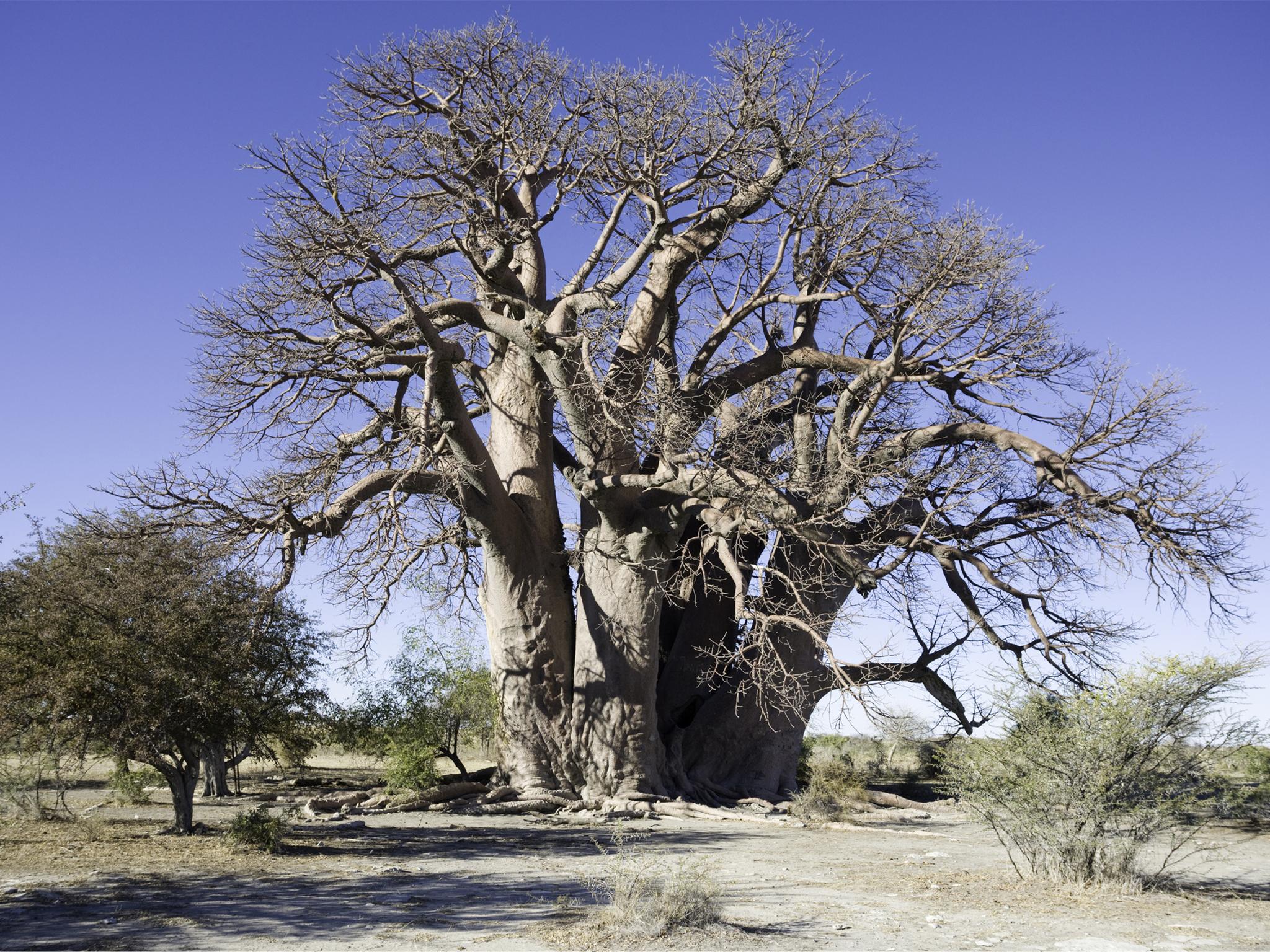Africa’s oldest and most unusual trees are mysteriously dying
Baobabs thousands of years old could be succumbing to climate change, scientists fear

Some of Africa’s oldest and most unusual trees have mysteriously started dying – and scientists think climate change may be to blame.
An exceptional number of baobabs, which are known to live for up to 2,000 years – and maybe longer – have died in the past 13 years, experts found.
Baobabs, also known as “dead rat” trees, after the shape of their fruit, are among the most distinctive plants in the world, with up to seven giant trunks that can look like pillars. They start growing as a single trunk but over time develop others.
Thanks to their size, they contain hundreds of square metres of wood but have massive hollow centres.
Adrian Patrut, a Romanian professor of inorganic and radiochemistry, and colleagues used radiocarbon dating to analyse more than 60 of the largest and oldest baobab trees in Africa to try to find out how the trees could grow so large.
To their surprise, they found that since 2005, nine of the 13 oldest, and five of the six largest baobabs had either died or had their oldest parts collapse.
Their paper, published online this week in Nature Plants, suggests that climate change may be affecting the ability of the trees to survive.
Prof Patrut told The Independent that El Nino - warm currents that travel east across the Pacific Ocean - had increased dry conditions over the past 20 years, leading to drought in southern Africa, which was thought to be one factor in the trees' demise.
The dead trunks were found to contain only 40 per cent water, instead of the 75-80 per cent they should have.
The extreme drought episodes meant the trunks could no longer support the tree's weight so they collapsed, he said.
Baobabs have a unique ring-shaped structure comprising multiple stems and trunks, often of different ages, that may fuse together to form a closed circle, or remain open. The experts found that in some cases all the trunks had died suddenly at the same time.
The most high-profile victim of the phenomenon is the Chapman's baobab in central Botswana, parts of which dated back 800 years, while others were 1,400 years old.
A national monument of Botswana and a tourist attraction, it was more than 82ft in circumference. On January 7 2016, its six trunks all collapsed and died.
“The deaths of the majority of the oldest and largest African baobabs is an event of an unprecedented magnitude,” the authors wrote.
“These deaths were not caused by an epidemic and there has also been a rapid increase in the apparently natural deaths of many other mature baobabs.
“We suspect that the demise of monumental baobabs may be associated at least in part with significant modifications of climate conditions that affect southern Africa in particular. However, further research is necessary to support or refute this.”
Subscribe to Independent Premium to bookmark this article
Want to bookmark your favourite articles and stories to read or reference later? Start your Independent Premium subscription today.

Join our commenting forum
Join thought-provoking conversations, follow other Independent readers and see their replies